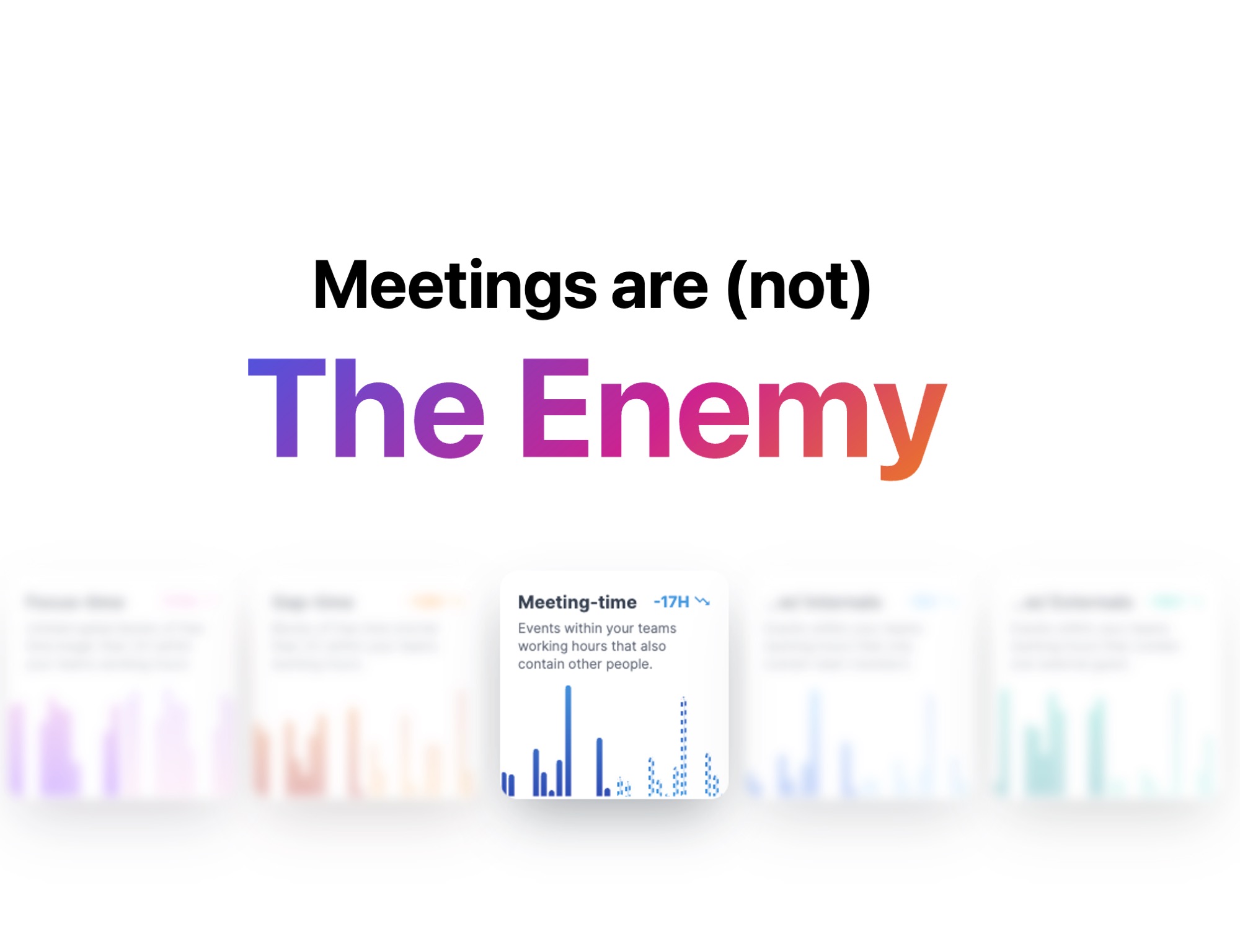5 Tips for fostering company culture in a hybrid workplace
10 min readGoing from remote to remote-ish: this article explores how to rock company culture in a hybrid work environment.

As our workplaces change and health restrictions ease, companies now must adapt to an entirely new way of working. While some employees are eager to jump right in and return to the office, others find the idea of returning to the same work format unfathomable.
In response to this, organizations have had to find creative ways to facilitate an effective and safe return to work. This includes a shift to a hybrid, half-in-the workplace, half-remote scenario.
The hybrid workplace is attractive as it promotes safety, freedom, flexibility and lowers barriers for many marginalized groups.
Despite these benefits, hybrid and remote work is not without its challenges. Chief among them is fostering a sense of belonging and a strong company culture. As we move away from in-person interactions and lean into digital forms of connection, leaders must find ways to implement in-demand hybrid workplaces and stay adaptable as belonging and engagement shift alongside it.
We all know how important strong company culture is in promoting a sense of belonging. Research shows that employees who feel a sense of belonging on a team tend to perform better and even exhibit higher levels of interest and wellbeing.
The bottom line: hybrid workplaces are here to stay, and companies able to smartly adapt will maintain their competitive edge. As organizations continue to evolve, one question remains: how can a company effectively foster engagement and morale in the age of shifting work situations?
Below, we take a critical look at the hybrid work environment and how you can make the most of this great opportunity without sacrificing company culture:
What‘s a hybrid workplace?
What are the benefits of a hybrid workplace?
What are the risks of a hybrid workplace?
How will hybrid work impact company culture?
5 Tips for fostering company culture in a hybrid work environment
What’s a Hybrid workplace?
Hybrid workplaces are precisely that: a hybrid or combination working model that allows employees to work remotely and in-office. It enables companies to take advantage of numerous benefits of in-person collaboration while letting employees work with more flexibility.
This is not a new concept. According to Accenture, 83% of workers said a hybrid model would be an optimal work format, even pre-pandemic. A majority of employees believe that hybrid working models have “a positive impact on their ability to be creative, solve problems and build relationships.”
As more organizations adopt this model, they’re also changing how managers and leaders shape their company cultures. Truthfully, no manual exists for successfully implementing and running a hybrid workplace, and there are many ways it can go wrong. Still, remote work has proven effective, scalable, and successful globally, effectively disarming arguments against it.
What are the benefits of a hybrid workplace?
✅ Flexibility
With a hybrid workplace, employees can take advantage of increased flexibility and better work-life balance. By offering this option, companies provide their employees with a choice in where and how they work. This helps attract and retain talent, reduces commutes, removes barriers to access for those with accessibility issues and commitments to dependents, such as parenting.
✅ Productivity
According to this study, in an 8-hour workday, most employees are productive only for a mere two hours and 53 minutes.
Hybrid work environments provide options to your team. This allows them to find that sweet spot of productivity: when you give employees opportunities to work in a way that suits them, you support them in making better use of their time.
✅ Diversity
While hybrid and remote work offers flexibility and productivity gains, it’s a chance for some to simply be able to work at all. Hybrid and remote work provides access to employees who cannot physically attend an office. From those with primary care responsibilities to those with physical or mental health disabilities and people facing socio-economic barriers, offering alternatives to the traditional in-office work scenario can help you create an inclusive and diverse organization.
✅ Lower costs
If the above points weren’t enough to sell you on hybrid workplaces, this last point surely will. Hybrid workplaces offer cost savings to employees and organizations alike. For employees, reducing or completely eliminating the need to commute or find affordable housing near the office can help create a better work/life balance. For employers, reducing the need for physical office space or downsizing to accommodate “hoteling” type workplace layouts can cut costs on overhead fees.
What are the risks of a hybrid workplace?
❌ No one-size-fits-all solution
Hybrid workplaces may seem too good to be true. With so many benefits, some challenges pop up. Often, finding a way to adapt hybrid workplaces to suit everyone can be difficult. For instance, studies show that upwards of 74% of Gen Zers are hungry for more face-to-face collaboration, compared to 66% of Gen Xers and 68% of Boomers.
❌ Communication challenges abound
Despite numerous benefits, hybrid teams face a heightened level of communication and collaboration challenges than fully remote ones. It’s tough to avoid, but the information is siloed more often amongst in-office team members while remote employees get left out of the loop.
On the flip side, Fabian Camargo, Management Coach at Camargo Consulting explains that a big challenge with hybrid or remote work is overcommunicating:
“A typical reaction to remote and hybrid work is to overcommunicate and over schedule. If we’re no longer seeing each other every day in person than we must have more check-ins, more video meetings, and more communication! But is that really the case? Is that really serving your needs? Could it be that being on Slack and email all day is doing more harm than good? What if we focused on quality over quantity?”
– Fabian Camargo, Camargo Consulting
Employers can help combat both over and under communicating with a thoughtful internal comms strategy and leveraging remote work tools.
❌ Lower visibility and limited career options
While an effective hybrid workplace culture can reduce existing barriers, it can also introduce another type of inequality: bias against remote workers. Many remote employees have reported feeling like their career opportunities are limited, leading to higher levels of disengagement and churn.
Hybrid work environments can also encourage the exclusion of remote workers from day-to-day operations, leading to lower in-office visibility. Studies show remote workers are more likely to be passed over for promotions and career opportunities than their in-office peers. According to a Stanford University study, remote workers “were 13 percent more productive, putting in more hours and making more calls per minute. They were promoted about half as often as their in-office peers.”
Corine Tan, Co-Founder of Kona, expands on exclusion in hybrid workplaces:
“When we talk to teammates about hybrid, their biggest fear is getting left out of opportunities and conversations while out of the office. Hybrid managers need to address inclusion and individual growth in a whole new way, one that encourages both in-office and remote folks. That means creating remote-friendly opportunities and relying more on documentation.”
– Corine Tan, Co-Founder, Kona
How will hybrid work impact company culture?
Let’s face it: cultivating relationships in person is far easier than doing so digitally.
In-office, spontaneous moments and inspiring collisions come as quickly as walking past your colleague’s desk or crossing them in the hall. Moments like this shape company culture and offer opportunities for creative problem-solving. It’s only natural that employees working in-office will have an advantage over those working from home, thus creating an imbalance.
Leaders must be mindful of this natural divide. Putting practices in place that encourage collaboration across both remote and in-office team members is a great start.
5 tips for fostering company culture in a hybrid work environment
Achieving this elusive sense of belonging can be daunting, but you can build both a hybrid workplace and a thriving workplace culture.
Here are a few of our best tips for optimizing for an enviable hybrid workplace environment.
1. Create a hybrid-friendly onboarding experience
A hybrid-friendly employee experience begins at onboarding. How you welcome a new employee will set the tone for their entire work experience. Companies seeking to build a hybrid workplace should map out a new onboarding process with a myriad of thoughtful, human touchpoints. For example, think through how to connect new remote employees to their colleagues who are going into the office.
👉 Check off all the boxes with our helpful onboarding checklist.
2. Remote-first meetings
The most functional hybrid workplace environments enforce strong remote-first meeting policies. Think about it: if your meetings are catered to those in the office, it’ll be difficult for remote workers to participate. Remote-first meetings put everyone on equal footing.
A critical part of reinforcing a hybrid or remote-first mindset is a mandate that all work meetings have an upfront agenda that everyone can access.
👉 Read more in our blog on how to run effective hybrid meetings.
3. Come together for team building
Whether you’re working synchronously or asynchronously, creating moments where your employees can connect is vital. Hybrid work models work best when there’s a foundation of trust and interconnectivity. It can’t be all work all the time. Smartly understanding ways to thoughtfully communicate on a more personal level will make or break your hybrid workplace experience.
Molly McCraken, Marketing Manager at Evergreen, explains her plan for connecting her team in a hybrid work environment:
I hope to plan at least one day a month (ideally once a week) that the whole team can come in. It could be so easy to start forming inside jokes or “side of desk” conversations that would benefit those in the office, only.
– Molly McCraken, Evergreen
But even if your employees aren’t able to gather in the office from time to time — try planning virtual team-building events so everyone can participate and get to know each other.
4. Encourage “coffee chats”
Building in time to get to know your team, in-office or remote, will help increase team efficacy and engagement.
Whether IRL or virtually on zoom, leaders can encourage their teams to connect for a coffee, tea, smoothie— whatever! Encouraging these moments of connectivity can help feelings of belonging and trust.
There are many tools you can use to foster these chats virtually, like Donut or Lunchclub.com.
Ryan Carruthers, Content Marketing Specialist at Together Platform, talks about why he appreciates these initiatives by leadership to help connect distributed teams:
As a fully remote employee on a hybrid team (half our company is hybrid) I don’t have reason to connect with other departments and I don’t want to waste their time, but I want to build relationships with those people. It’s tough to reach out to them and ask to chat when I know they’re busy. I think managers play a large role in helping bridge this disconnect.
– Ryan Carruthers, Together Platform
5. Build trust across the company with 1:1s
Speaking of trust, whether your team is hybrid or not, encouraging trust is important, and is the secret sauce to fostering positive company culture. It all starts with your 1:1s. See your 1:1 meetings as a touchpoint to manage workflows, a way to connect and understand, and ultimately as a way to build trust that transcends a physical presence in the office.
Try a one-on-one software, like Hypercontext, for more inclusive and effective one-on-ones, no matter where you’re physically located.
Using a collaborative online agenda helps keep everyone on the same page — no matter where they’re working. Try introducing Hypercontext to your team to help build an enviable hybrid workplace.


